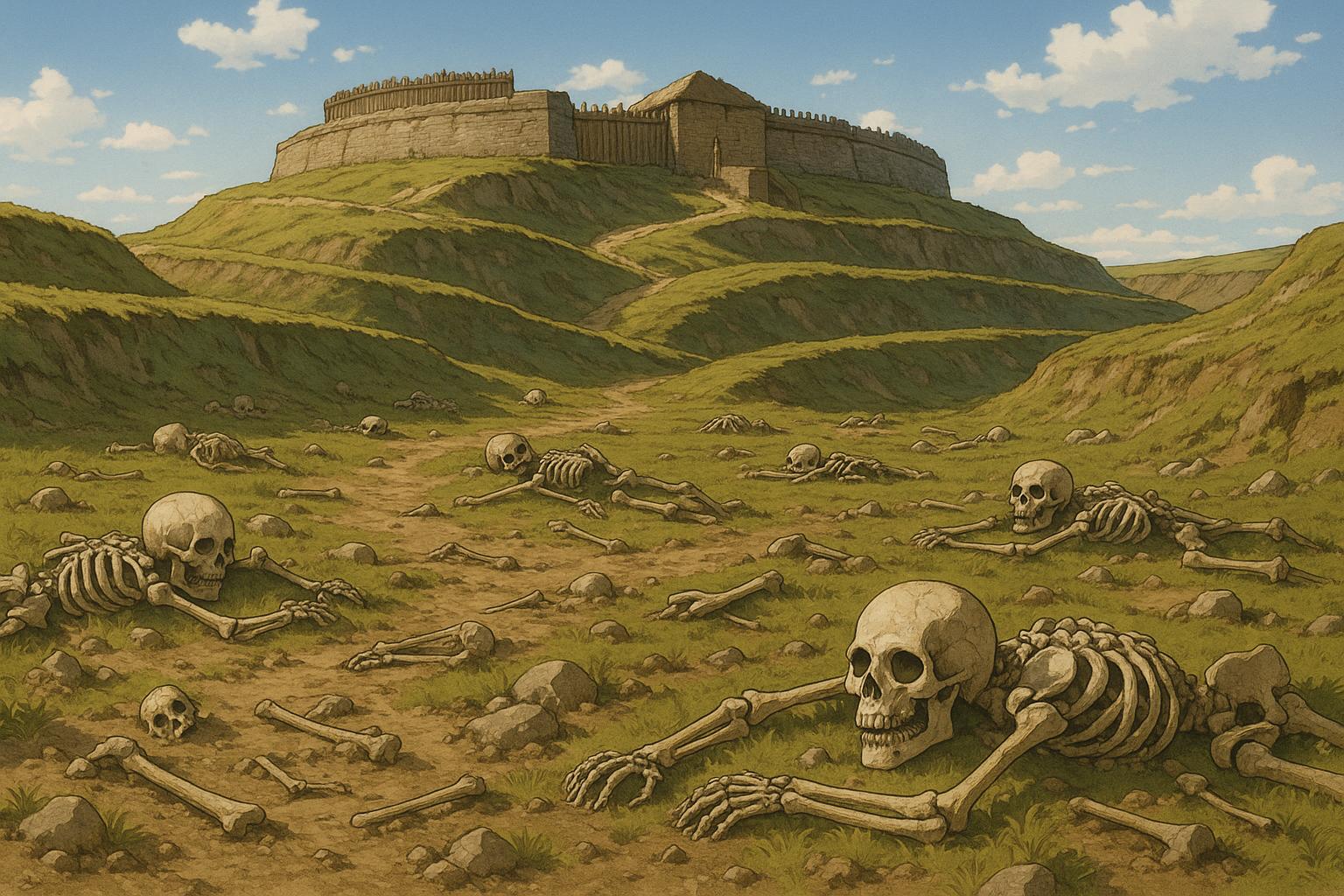A groundbreaking study published in the Oxford Journal of Archaeology has called into question a pivotal and often romanticized episode in British history. The battle at Maiden Castle, an iconic Iron Age hillfort in Dorset, has long been portrayed as a tragic confrontation between Roman forces and defiant Britons. However, new radiocarbon dating reveals that the remains discovered in what is often labelled a "war cemetery" were interred over several decades, rather than being the aftermath of a single, catastrophic conflict.
The iconic narrative surrounding Maiden Castle has its roots in the discovery made by Sir Mortimer Wheeler in the 1930s. This excavation revealed numerous skeletons displaying clear signs of trauma, leading Wheeler to suggest they were victims of a brutal Roman siege. His interpretation resonated deeply with British national sentiment, especially in the context of the looming Second World War, framing a story of heroism and sacrifice that has been retold in various media, from documentaries to scholarly works.
However, the new findings spearheaded by Miles Russell, a principal academic in Prehistoric and Roman Archaeology, indicate a different story. Russell’s study systematically employed radiocarbon dating, establishing that the human remains at Maiden Castle were likely buried between the late first century BCE and the early first century CE. This timeline suggests that the deaths resulted from internal strife among tribal groups rather than Roman aggression. “The archaeological evidence now points to a somewhat unromantic reality; it was Britons killing Britons,” Russell noted, challenging the existing historical narrative.
This reinterpretation aligns with previous analyses that have suggested the complexities of violence in the Late Iron Age. Studies have pointed out that injuries found on the bones may not solely reflect siege warfare but could stem from a range of social practices and conflicts within the Britons themselves. Such insights advocate for a deeper exploration of the societal structures and norms of the time, which might have contributed to these violent encounters.
The implications of this revised understanding extend beyond Maiden Castle, stirring discussions within the archaeological community about the interpretative frameworks applied to historical sites across the UK. The long-held notion that the hillfort stands as a memorial to a singular, noble sacrifice is increasingly seen as too simplistic. As Paul Cheetham, a visiting fellow in archaeology, suggested, “This interpretation opens doors to understanding a more nuanced social landscape—one where burial practices reflect complex divisions and hierarchies.”
Moreover, the site of Maiden Castle itself may still hold undiscovered secrets. The limited scope of Wheeler's original excavations implies that many more burials might lie hidden beneath the expansive ramparts, waiting to reveal further insights into the complex human histories carried within the earth. The need for continuous inquiry into these historical narratives has never been more evident, as new methodologies unearth layers of understanding previously obscured by dominant narratives.
In light of these revelations, it becomes clear that history is not a static collection of facts but a dynamic narrative shaped by interpretation and re-evaluation. As archaeologists delve deeper into the past, they are reminded that every discovery not only tells a story but also reshapes our understanding of who we are and where we come from.
📌 Reference Map:
Source: Noah Wire Services
